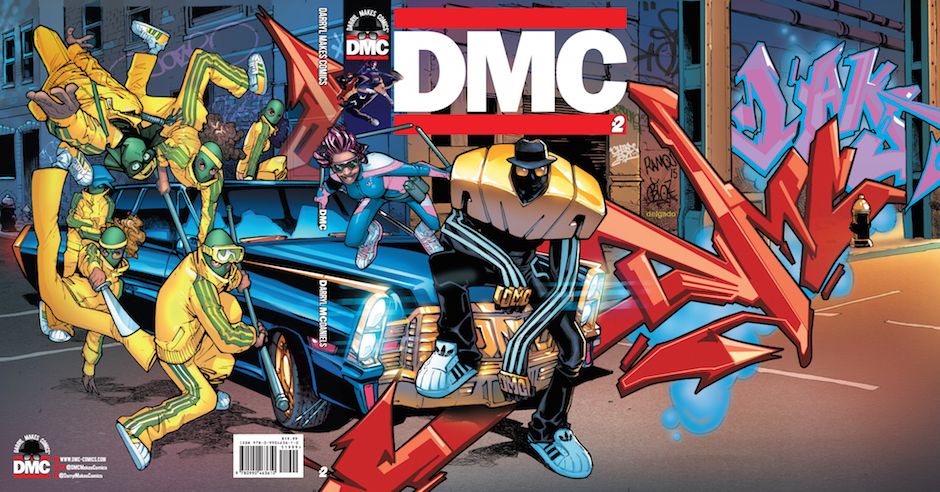Published by DMC aka Darryl Makes Comics and created by DMC aka Darryl McDaniels, "DMC" #2 creates an opportunity for many different creators to get in on the action. Written mostly by Amy Chu with an opening chapter by David Walker, the art team -- including Juan Doe, Sung Goo Won, Marcus Williams, Afu Chan and Elliot Fernandez -- splits duties across several different, loosely connected chapters that chronicle the arrival of a new synthetic street drug, which is controlled by malicious corporate interests.
Read as a series of vignettes, the book is a fun exploration of the fictional DMC's world, including his transformation from award-winning teacher to fedora-clad champion of the streets, but it struggles to come together as a cohesive story. The book tries to do a lot within its pages, which keeps the pace brisk but does so at the expense of character building moments. It left me feeling a little disconnected from them, especially LAK6, DMC's teenage sidekick. However, the art is full of kinetic, street-influenced characters and visuals that give the series a bit of edge.
Most of the characters fall into two categories: blue collar champions of the people and capitalistic superpowers corrupted by greed. DMC is a riff on the "Batman" genre, a comparison firmly underlined in this issue as Darryl gets a teen sidekick, a hideout in a cave, odd gadgets and an awesome car. It's a great setup, but -- as mentioned above -- it struggles to rise above the sum of its parts. It's possible this is partly because of the massive cast of creators on the book; Chu, Walker, Darryl "DMC" McDaniels, Edgardo Miranda-Rodriguez and Greg Pak are credited for script and story, and five different artists pitch in between the story and epilogue. Editors Edgardo Miranda-Rodriguez and Rigo Morales weave the parts into a good anthology, but it still has a committee feel to it all. The story is very much about the visuals; Chu's script is minimal, giving fans the most necessary information without a lot of flourish and leaving the art open to cut loose. It keeps the book moving forward quickly, but you don't really get a sense of motivation from the bad guys other than their being generally awful people. I would have loved to see a little more of the "why" answered by the actions of Staxworth, the company manufacturing drugs which are driving ordinary people crazy and turning superheroes into monsters.
Some of the artists take advantage of the sparse scripting style, giving the action sequences unique interpretations. Sung Goo Won, who handles the art on chapter 2, has the most unique style, distorting characters and perspectives in the club fight, which almost makes readers feel like they are on a trip as they experience the environment. Doe covers the opening and final chapters, providing big, wide panels filled with Marvel-style action and a hazy color palette that gives his work an interesting softness on the page. In addition to the best small-moment storytelling in the book, Williams handles the "Deep Throat"-inspired parking garage showdown with an animated style reminiscent of Michael Avon Oeming. Chan's chapter, where DMC and LAK6 finally become a duo, looks the most distinct, as the artist colors his own work in a retro palette that looks like it came from the pages of Ed Piskor's "Hip Hop Family Tree."
"DMC" #2 winds up being hamstrung by its own ambition; it has the elements of a fantastic story but -- with too many creators, an entire origin to cover and too little character development -- the book winds up good, not great. Though a unique format experiment by the new publisher, "DMC" #2 is only the second issue, and they will continue to learn as they go. Here's hoping issue three builds off of issue two.

